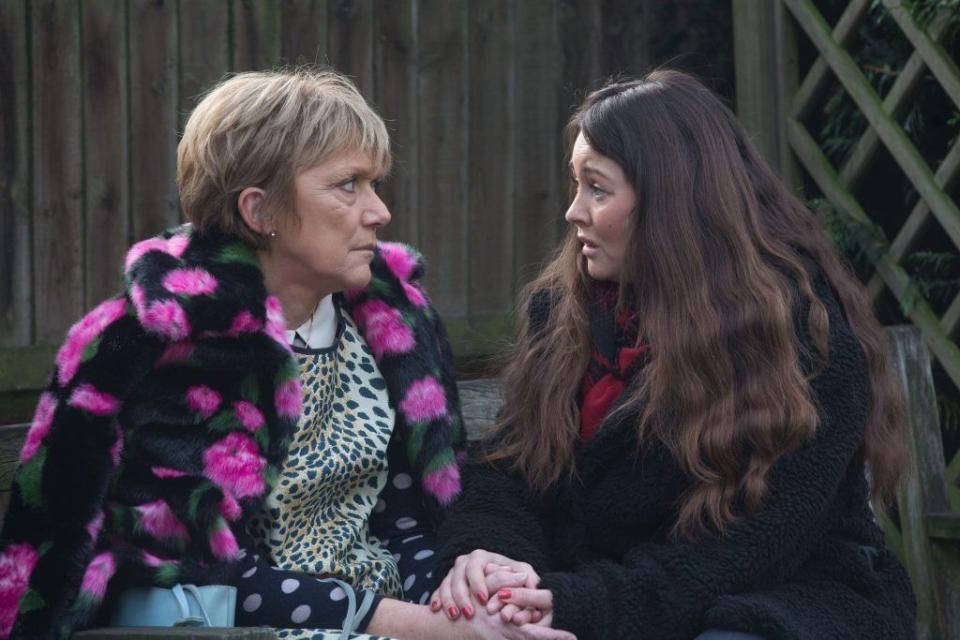My Mental Health: EastEnders helped me discover my schizoaffective disorder diagnosis

Each year as part of Mental Health Awareness Week, Digital Spy writers share their experiences of how entertainment can be part of the conversation around mental illness.
Doof. Doof. The end of another episode. I feel relaxed. For over 20 years, these EastEnders characters have carried me through the highs and lows I have encountered before, during and after my diagnosis of schizoaffective disorder.
Schizoaffective disorder (bipolar type) is a less well-known chronic mental illness, featuring mania, depression and confusing elements of schizophrenia. For me, I experience all of these at once, followed by periods of feeling perfectly healthy – with a pinch of anxiety. Sounds fun, right?
Feeling high and low at the same time may sound balanced, but when they're at two extremes of the scale it's a dangerous concoction. A potion that EastEnders character Stacey Slater, played by Lacey Turner, got to know all too well.
Related: 7 times that TV got mental health right
Ten years ago, Stacey had a storyline that hit home so hard, it encouraged me to seek help by myself at the age of just 17. Whilst my diagnosis is a little different to Stacey's, without this storyline I may never have spotted the signs and pursued the support and medication I needed.
Building up to Stacey's bipolar diagnosis, Walford saw her bounce around the Square confused and wired, making little sense to the E20 residents, before her mother Jean (Gillian Wright) recognised the symptoms from her own experiences, and took Stacey to get medical attention.

One image that stuck with me was the wobbly out-of-focus camera angle, used to juxtapose Stacey against her surroundings, as though through her own vision. I remember thinking, "I see things like that too."
I would be walking through the London Underground tunnels, heart racing, with people everywhere, out of focus and unsteady. I'd be in a meeting at work, sensing my cheeks burning red but feeling no connection to my body. I'd be at home, staring hard into the mirror, only to not recognise the face looking back.
Ten years on and a few years of therapy along, I now recognise all this as derealisation – something as a teenager I needed to see acted out on television, as I would never have understood it in words.
Derealisation is the feeling when someone feels detached from their surroundings, causing everything to seem unreal. It can distort vision and trigger panic attacks. Seeing this visually through the TV show, helped me to recognise my behaviour and thoughts as symptoms.
Once I had identified with Stacey's symptoms portrayed in the soap, suddenly everything clicked into place. What was once seen as an overreaction to teenage hormones was in fact a full-on medical condition.
I felt relieved – finally it all made sense. Why I'd cry at school more than anyone I knew, or why I'd experience everyday situations as surreal. I took myself to the doctors and began the journey of my diagnosis.

Related: How EastEnders' Lee Carter story gave me comfort
I wasn't the only one. According to doctors, the number of 18-24-year-olds seeking help for bipolar disorder doubled in the six months following Stacey's on-screen diagnosis.
Throughout my diagnosis, Stacey has been married, had children and a career – all of which show a snippet of how mental illness can impact different areas of your life. Stacey has had friends and family respond in all different ways, which accurately reflects my experiences and is a comfort to watch.
Stacey's EastEnders storyline allowed me to connect with a mental illness I didn't know I had. It changed my life.
We would encourage anyone who identifies with the topics raised in this article to reach out. Organisations who can offer support include Samaritans on 116 123 (www.samaritans.org) or Mind on 0300 123 3393 (www.mind.org.uk). Readers in the US are encouraged to visit mentalhealth.gov.
You Might Also Like

 Yahoo News
Yahoo News 
